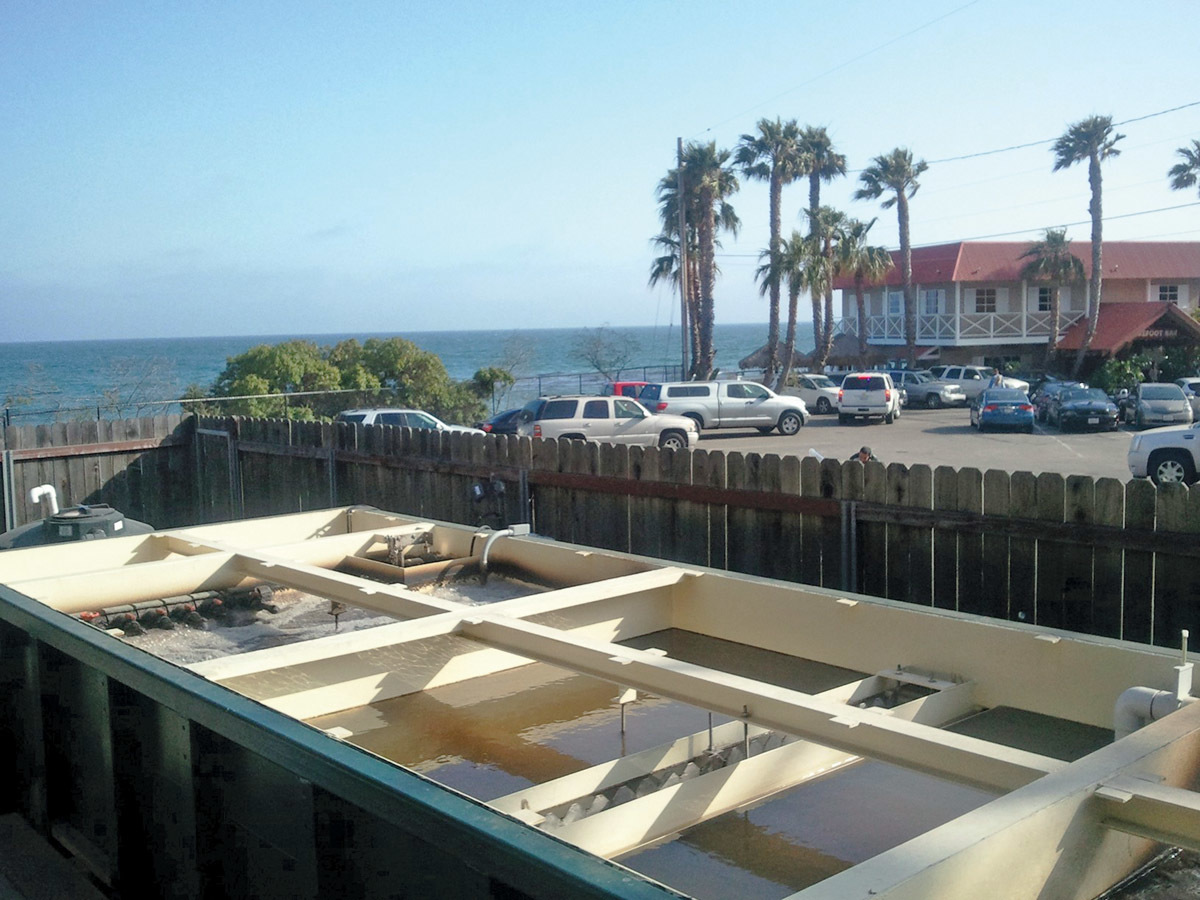Interested in Systems/ATUs?
Get Systems/ATUs articles, news and videos right in your inbox! Sign up now.
Systems/ATUs + Get AlertsGSF system a fit for site with compacted soil
Problem: A two-bedroom home in Lawrence County, Indiana, had a failing system with effluent surfacing around the tank. The site has areas with drainage issues, and previous structures on the property created soil compaction in the remaining usable area.
Solution: The compacted soils were removed and replaced with 20 inches of Indiana Department of Transportation Spec 23 sand. An Eljen GSF (Geotextile Sand Filter) bed system was designed with an application rate of 0.25 gallon per square foot in the available area, and it has less overall height than a traditional mound. The drainfield consists of 24 A42 GSF units installed in three rows spaced 3.5 feet apart. The overall bed dimensions are 41 by 20 feet. The drainfield final elevation is above grade and flood dosed.
Result: A code-compliant system was installed on the difficult site. The GSF system manages biomat buildup, helping to protect the soils below, and is also able to disperse effluent over the slow soils. 800-444-1359; www.eljen.com.

Strict disinfection needs solved at oceanfront Malibu restaurant
Problem: Located on the oceanfront in Malibu, California, Duke’s Malibu is a popular restaurant, named for Duke Kahanamoku, the father of surfing. Wastewater from the restaurant averages 6,000 gpd and must be treated on site and directly discharged to the sensitive, sandy beach environment. The existing wastewater treatment system was outdated and caused numerous water-quality and discharge violations.
Solution: Carlile Macy was selected to provide an upgraded treatment system in 2011. It chose an upflow sludge blanket filtration system, or USBF, and SALCOR UV disinfection, consisting of four 3G units in two parallel tracks. The design was approved by the California Regional Water Quality Control Board and city of Malibu, and construction of the new plant was completed in April 2012.
Result: The system immediately produced high-quality effluent, which met the stringent disinfection requirement of California Title 22. Results have been consistent since operation began. Effluent total coliform count has been nondetectable, and the dissolved oxygen concentration has averaged 6 mg/L. The discharge has reduced coliform levels in the groundwater lens under the site and adjacent beach from more than 1,600 MPN to less than 2 MPN. The treatment plant and the Salcor UV units have now been operating over eight years, and have continued to produce high quality effluent that meets California Title 22. 760-731-0745; www.salcor.world.






